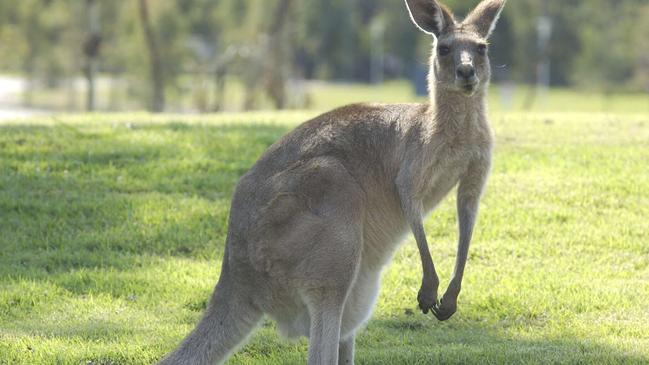New data reveals the risk from kangaroos grazing on roadside
New data shows the potentially deadly and costly result of animal strikes which have seen a jump to levels not seen in years across Queensland.

Toowoomba
Don't miss out on the headlines from Toowoomba. Followed categories will be added to My News.
Drivers setting out on cross-country road trips this Easter are being urged to pay special care to avoid hitting wildlife with their car.
The warning comes after NRMA Insurance recorded a 35 per cent increase in animal strikes claims from 2022 to 2023.
According to the NRMA data, Goondiwindi, Roma and Jimboomba are the worst regions in Queensland for animal strikes, along with the Mitchell Highway at Charleville, the Flinders Highway in Charters Towers and Parkridge Road in Park Ridge.
The Queensland Police Service’s Darling Downs Superintendent Doug McDonald used part of his Easter road safety address to call on motorists to slow down.
“Animal strikes are always a problem for us out in rural areas,” he said.
“Over the years, I’ve seen fatalities as a consequence of animal strikes.
“The most important one is drive to the speed limit because you severely reduce your ability to respond to an unexpected event on the road if you’re driving over the speed limit.
“That’s why we have speed limits. So that gives you the opportunity to take evasive action if necessary.
“Also, be aware of your surroundings. That’s why you need to 100 per cent focus your attention on the road in front of you, and particularly looking ahead on those country roads that you’re travelling on.”
The rate of animal strikes increases in the cooler months as grass starts to frost and die off, forcing wildlife closer to roads for green shoots.
“They may leap out in front of their car unexpectedly, so encourage people to slow down,” Superintendent McDonald said.
“It’s more prevalent during dusk, and dawn periods to have animals come out to feed, so it is a good option to minimise your travel on the roads in those periods, particularly for motorcyclists who have less protection against animals that may suddenly jump out from the side of the road.”
NRMA has reported a four-year high for animal strikes.
Kangaroos account for about 85 per cent of incidents, followed by wallabies, wombats, deer, foxes, cattle, and koalas.
“Our claims data shows there is a heightened risk of wildlife encounters during Autumn and Winter when the days are shorter and darker and nocturnal animals are more active,” NRMA Insurance executive manager Natalie Major said.
“How a driver reacts can help protect our wildlife, minimise damage to your vehicle and potentially even prevent injuries and save lives, so it’s important to be alert.
“Ensure you are well-rested before setting off on a long drive and take regular breaks.”
NRMA Insurance safety advice for drivers
• If you can, avoid driving at dawn, dusk, or night-time as this is usually when animals are most active, and lack of light makes it more difficult to see them.
• It’s important to have a good night’s sleep before a long drive and schedule regular breaks, ideally 15-minute break every two hours.
• Reduce your speed inside sign posted wildlife areas.
• If you see an animal on or near the road, you should try to slowly brake, but not swerve.
• If you hit an animal, if it is safe to do so, you should check the animal’s welfare and call your local wildlife rescue service.
More Coverage
Originally published as New data reveals the risk from kangaroos grazing on roadside





